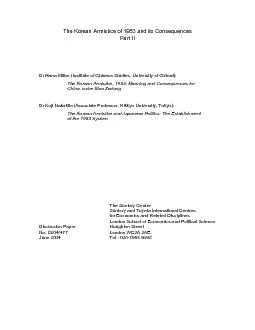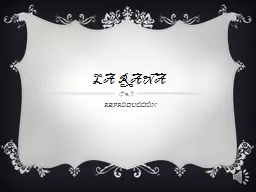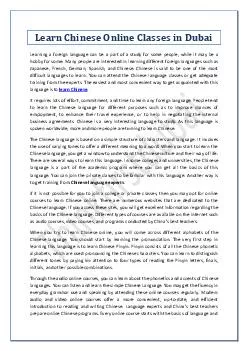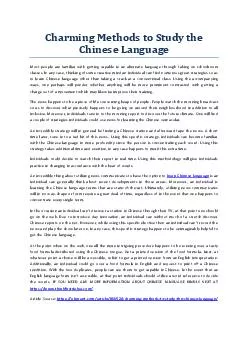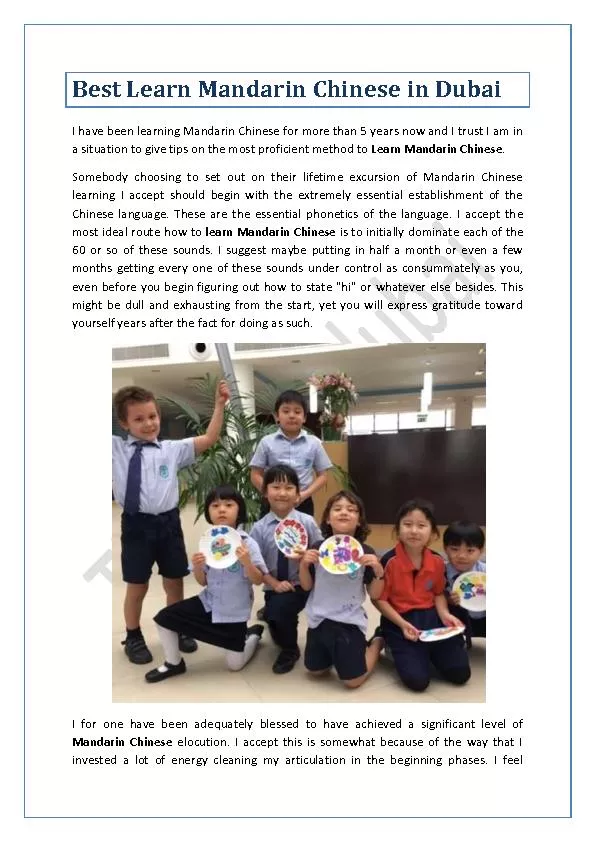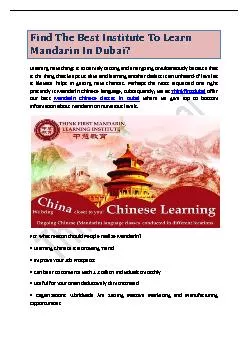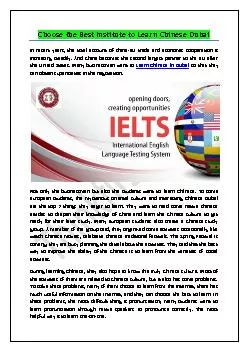PDF-1953 and its Consequences Dr Rana Mitter (Institute of Chinese Studies
Author : jane-oiler | Published Date : 2016-02-23
PrefaceIn continuation of the International Studies pamphlet issued in February we now publish the paper by Dr Rana Mitter Institute of Chinese Studies University
Presentation Embed Code
Download Presentation
Download Presentation The PPT/PDF document "1953 and its Consequences Dr Rana Mitter..." is the property of its rightful owner. Permission is granted to download and print the materials on this website for personal, non-commercial use only, and to display it on your personal computer provided you do not modify the materials and that you retain all copyright notices contained in the materials. By downloading content from our website, you accept the terms of this agreement.
1953 and its Consequences Dr Rana Mitter (Institute of Chinese Studies: Transcript
Download Rules Of Document
"1953 and its Consequences Dr Rana Mitter (Institute of Chinese Studies"The content belongs to its owner. You may download and print it for personal use, without modification, and keep all copyright notices. By downloading, you agree to these terms.
Related Documents

